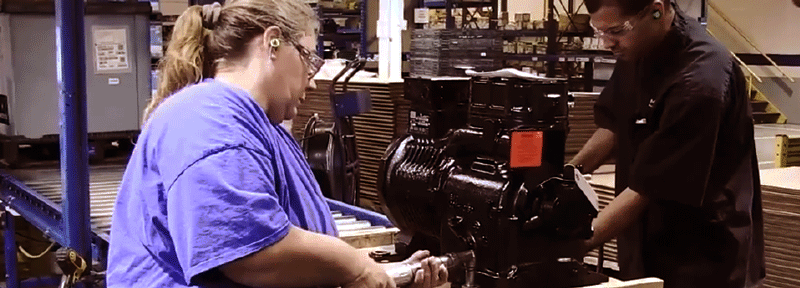
When making air conditioning recommendations to homeowners, having a firm grasp on the best options available and communicating which system will best suit their specific needs is essential. What is most energy-efficient? Which systems operate at optimal speeds? What will deliver ideal home comfort levels? These are all questions that homeowners will be seeking answers to when shopping for a new system.
While many homes still use the standard single-stage air conditioner, two-stage and variable speed systems provide better load matching, efficiency, and dehumidification. Learning more about their differences and benefits can help you guide customers toward making the best choice for their homes.
Two-Stage AC System
A two-stage compressor (sometimes labeled as “dual-stage”) works at two different capacities. The system varies its output as compared to a single-stage compressor, which only offers one level. Unlike single-stage, which either operates at 100% capacity or not at all, two-stage compressors can operate at two levels: high and low.
Rather than running continuously, two-stage systems either run at full capacity or kick to a lower setting – usually at 60-70% capacity – which uses significantly less energy than constantly turning on and off. As a result of the energy savings, a two-stage compressor typically has a longer lifespan and requires less repairs.
Variable Speed AC System
A variable speed system operates across a capacity range, which provides maximum energy efficiency and ideal home comfort levels. This system will make slight adjustments to its speed as needed to circulate even cooling throughout the house, resulting in precise temperatures, desired comfort levels, and effective dehumidification.
Unlike single-stage or two-stage systems, variable speed compressor systems rarely turn off. Instead, they typically operate below 100% capacity while varying speed to best maintain indoor setpoints. Since this system does not frequently power on and off, it provides substantial savings on electricity costs and generally allows for a longer lifespan.
Benefits of Each System
The two-stage air conditioning system is a good middle ground between the lower-end of single-stage and the higher upfront cost of a variable speed system. Compared to a single-stage system, it will save on energy costs while usually costing less than a variable speed system to initially install.
Variable speed systems run the most efficiently and are also quieter than most other air conditioners since they typically run at reduced speeds. These systems tend to offer the most savings on energy costs and provide better control over home temperature and humidity levels.
How to Choose the Best System
When helping homeowners come to the best decision for their home and lifestyle, find out what their long-term plans are. If they plan to stay in their home for several years, a variable speed system will save money and energy in the long run despite a higher installation cost.
On the other hand, if they are planning on staying in one place for a short amount of time, considering a two-stage system might make the most sense. Keep in mind, however, a higher-end air conditioning system could help improve the home’s resale value.
The size of the house also plays a factor in determining the best option. Newer systems like variable speed are often larger than older systems, such as single- or two-stage. It is important that there is enough space to house the equipment properly.
There are always more considerations, but they will likely be specific to the individual homeowner. In the end, it comes down to what will best fit the home, preferred lifestyle, and budget.
Read Next: What Is The Difference Between Rebuilt Compressors Vs. Remanufactured?


